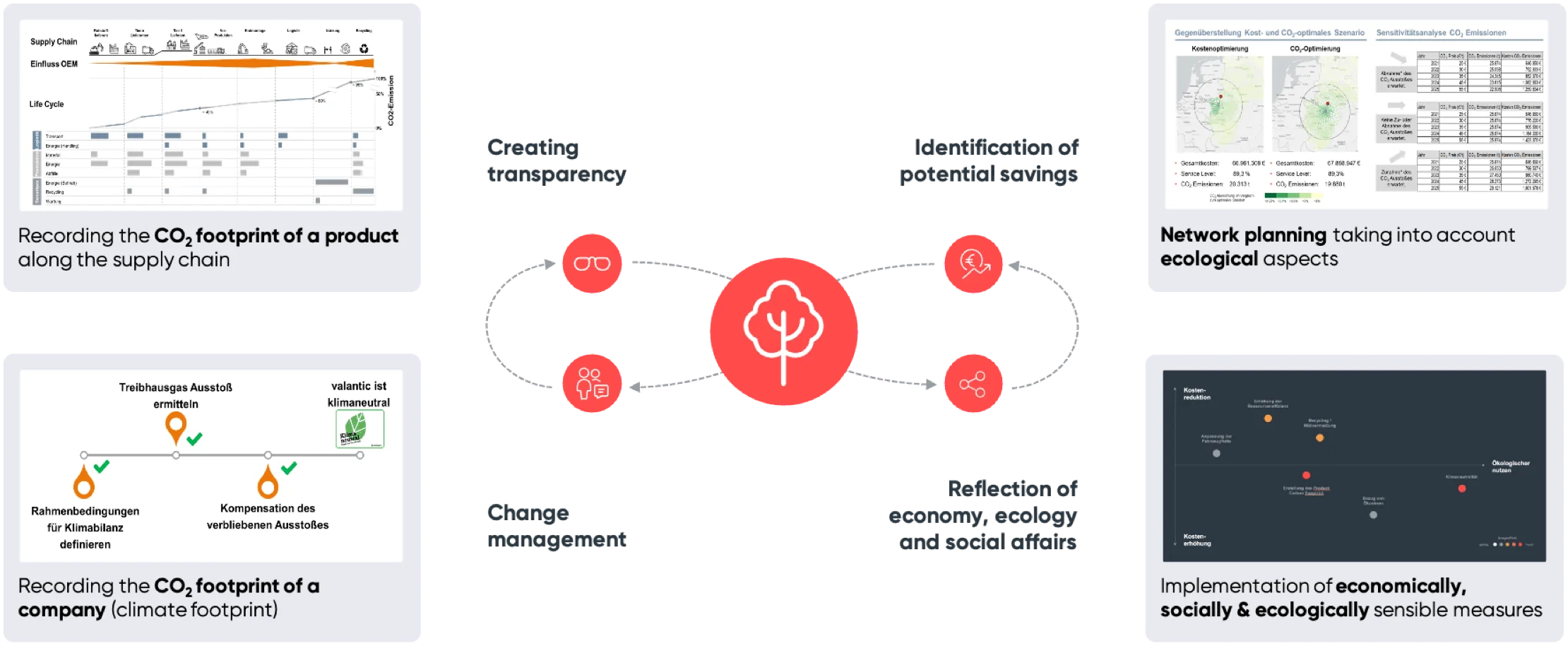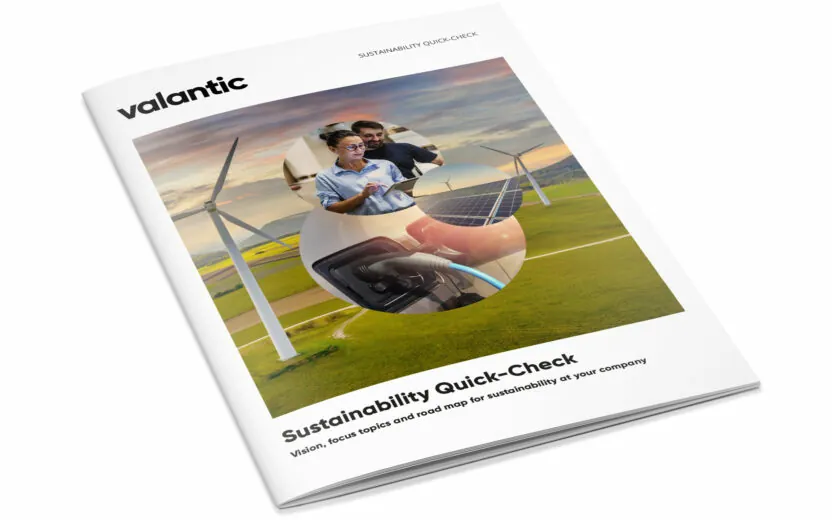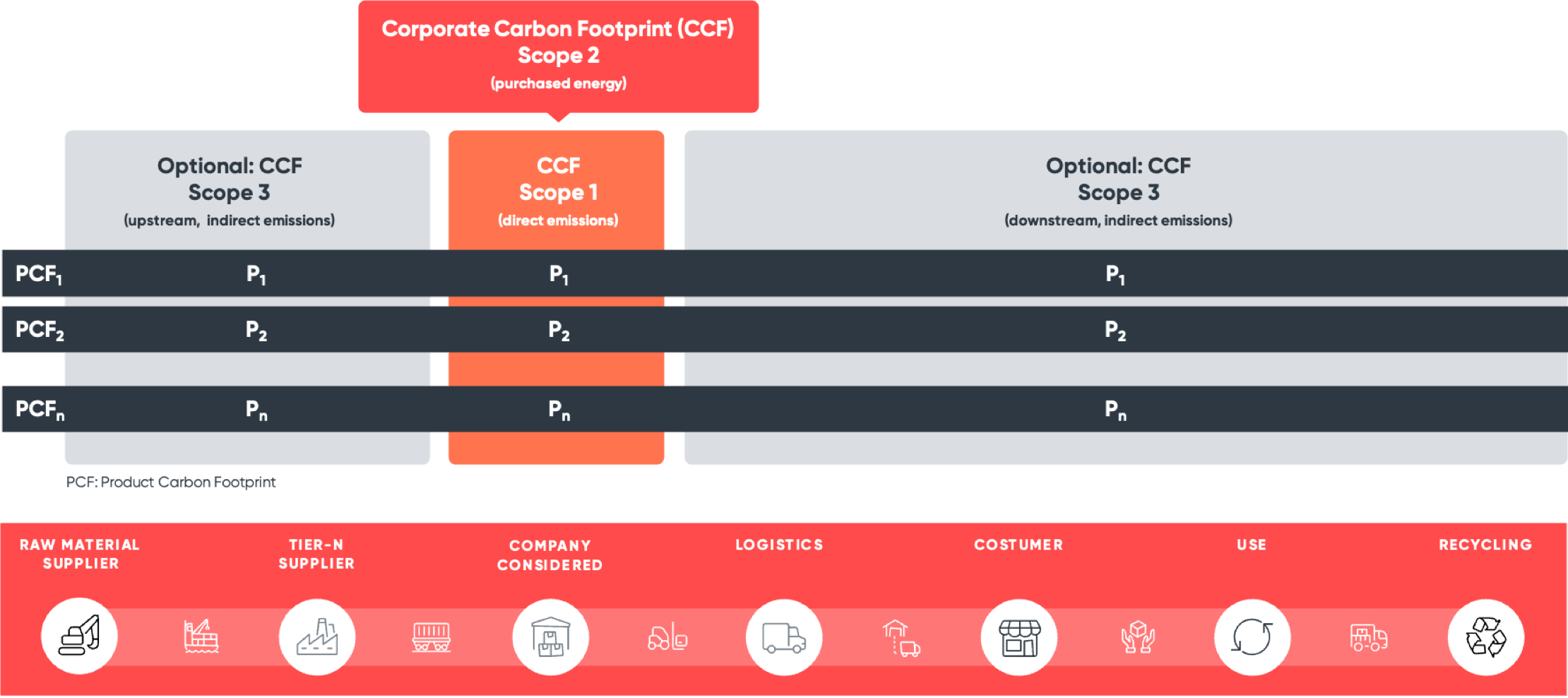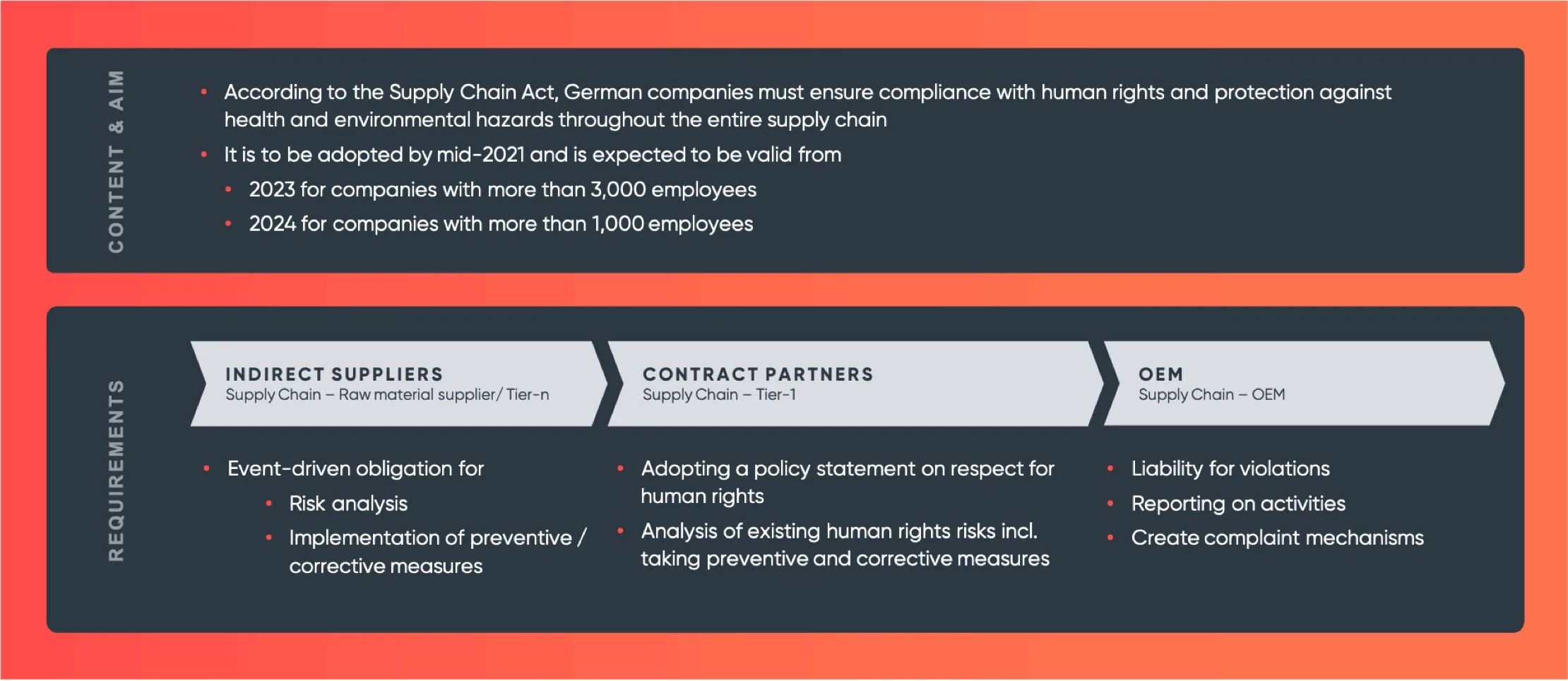To successfully implement the reduction path and ensure continuous transparency, the final step of transformation requires the long-term integration of sustainability into the company’s strategy and culture. This initially involves the implementation of a governance structure in the form of organizational and structural adjustments to anchor the reduction goals in all areas and levels of the company.
Transparent reporting aids in monitoring and communicating progress along the reduction path. The transformation is accompanied by change management, which involves informing employees about planned changes, addressing potential concerns, raising awareness of the importance of sustainability, and imparting the necessary knowledge. For a long-term, successful reduction of CO2 emissions within the company, the automation of emission data collection should be continuously advanced.
By applying valantic’s strategy and utilizing external technologies and software solutions, the collection of emission data can be automated, optimized, and delivered in real-time. In addition to monitoring, the data can be used to perform simulations and create forecasts, making it easier to compare different courses of action and their ecological and economic impacts. These results can then be used for operationalization by incorporating sustainability metrics into procurement processes, sales, and operations planning (S&OP). Only by doing so can emissions be considered an essential factor in company decision-making alongside time, cost, and quality.





